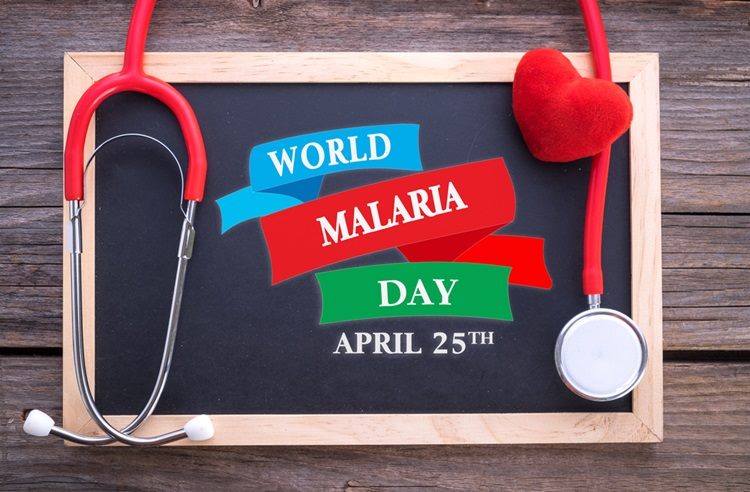World Malaria Day 2024: A New Approach to Eradicate the Disease
World Malaria Day 2024: A New Approach to Eradicate the Disease

World Malaria Day is celebrated every year on April 25th to recognise the fight against malaria worldwide. It is an opportunity to acknowledge the incredible efforts made by researchers, healthcare workers, and communities around the globe to tackle malaria. It also emphasises the need for sustained financial support.
The 2024 theme of World Malaria Day by WHO (World Health Organisation) is ‘Time to deliver zero malaria: invest, innovate, implement’. The organisation will primarily focus on this year’s theme’s ‘implementing’ aspect. WHO hopes to focus on using the tools and techniques already available in the Western Pacific, especially in underprivileged and vulnerable populations.
The core message of the theme of World Malaria Day 2024
The 3 'I's represent:
1. Invest
Investment in malaria control programs is essential for eradicating the disease. Adequate funding is necessary to support various interventions, including vector control, diagnosis, treatment, and surveillance. Investment in science and research is critical for driving innovation in malaria control. They have the potential to revolutionise malaria prevention, diagnosis, and treatment. Additionally, investment in research is essential for understanding the biology of the malaria parasite, monitoring drug resistance, and identifying new drug targets.
However, the gap between the funding needed and investment in malaria control has grown in the last three years. With the economic turmoil, as the world goes through the repercussions of the pandemic, it is becoming difficult to bridge this gap.
Funding should be directed towards the most powerless populations who face limited access to services and are disproportionately impacted by this disease, ensuring resources are allocated where they are most urgently needed.
2. Innovation
Innovation plays a central role in advancing malaria control strategies and overcoming the challenges posed by the disease. Innovative approaches are needed to reach vulnerable populations, enhance access to malaria prevention and treatment services, and address emerging threats such as insecticide and drug resistance.
The development of ITNs (Insecticide-treated Nets), LLINs (Long-Lasting Insecticidal Nets) and IRS (Indoor Residual Spraying) to control the growth of vectors (i.e., Anopheles), RDTs (Rapid Diagnostic Tests) for early diagnosis and ACTs (Artemisinin-based combination therapies) for treatment of malaria has contributed to fighting against malaria.
Mobile technologies and geographic information systems (GIS) can enhance surveillance, enabling more efficient interventions.
Investing in advancing and implementing next-generation tools is crucial for attaining the global malaria targets by 2030.
3. Implementation
Effective malaria control measures are essential for translating investments and innovations into tangible results. This aspect of the theme underscores the importance of putting existing tools and strategies to work. Implementation requires strong political commitment, leadership, and coordination at all levels, from national governments to local communities to global platforms. It implicates launching vigorous health systems capable of providing quality malaria prevention, diagnosis, and remedy services.
Strengthening supply chains, training healthcare employees, and facilitating community engagement are critical to successful malaria control programs. Besides, monitoring and evaluation mechanisms are vital for tracking progress, identifying gaps, and confirming responsibility for delivering malaria control interventions.
The message is to implement these tools and bridge the gap in access to reach everyone affected by malaria.
Some other facts about malaria
1. Malaria definition
Malaria is a vector-borne parasitic disease caused by Plasmodium species of protozoa and spread to human beings by the Anopheles mosquito.
2. Symptoms of Malaria
Malaria symptoms typically include fever, chills, sweats, headaches, body aches, fatigue, nausea, and vomiting. The severity and type of symptoms can change depending on the kind of malaria parasite causing the infection. Severe malaria may cause death, too.
3. At-Risk Groups
The risk of severe infection is greater in children, pregnant women, travellers (areas where malaria is endemic), people with weak immune systems (for example, people suffering from AIDS), people living in malaria-endemic regions, and outdoor workers.
4. Prevention of Malaria
Preventing malaria involves using insecticide-treated bed nets, applying mosquito repellents, wearing protective clothing, and taking antimalarial medication as prescribed. Removing vector breeding sites by removing stagnant water and seeking prompt medical treatment for symptoms are crucial preventive measures in malaria-endemic areas.
Malaria is common in people living in tropical areas. India is one such country. Severe malaria is less frequent in the Indian population, but uncomplicated malaria is still prevalent. Treatment of malaria or its control via vaccines can be expensive and draining in your wallet.
Opting for health insurance will help you battle against this disease easily, with fewer expenses.
Family insurance plans will help you secure a better future for all the members from this hazardous disease.
Conclusion
The theme ‘Time to deliver zero malaria: invest, innovate, implement’ for World Malaria Day 2024 served as a call to action for governments, organisations, communities, and individuals to maximise their efforts in the fight against malaria. It signifies the need for more investment in malaria control programs, innovation in research, and useful implementation of already available interventions. By investing in malaria control, promoting innovation, and ensuring the adequate delivery of malaria control measures, we can move closer to achieving the goal of a world without malaria.
Disclaimer The above information is for illustrative purposes only. For more details, please refer to policy wordings and prospectus before concluding the sales.
RELATED ARTICLES
A Guide to Everything You Need to Know about Malaria
How to prevent malaria during monsoon?
Most Common Ailments to Prevent During Monsoon










 Car Insurance
Car Insurance  Bike/Two Wheeler Insurance
Bike/Two Wheeler Insurance  Health Insurance
Health Insurance  Pet Insurance
Pet Insurance  Travel Insurance
Travel Insurance  Home Insurance
Home Insurance  Cyber Insurance
Cyber Insurance  Third Party Vehicle Ins.
Third Party Vehicle Ins.  Tractor Insurance
Tractor Insurance  Goods Carrying Vehicle Ins.
Goods Carrying Vehicle Ins.  Passenger Carrying Vehicle Ins.
Passenger Carrying Vehicle Ins.  Compulsory Personal Accident Insurance
Compulsory Personal Accident Insurance  Travel Insurance
Travel Insurance  Rural
Rural  Critical illness Insurance
Critical illness Insurance 











